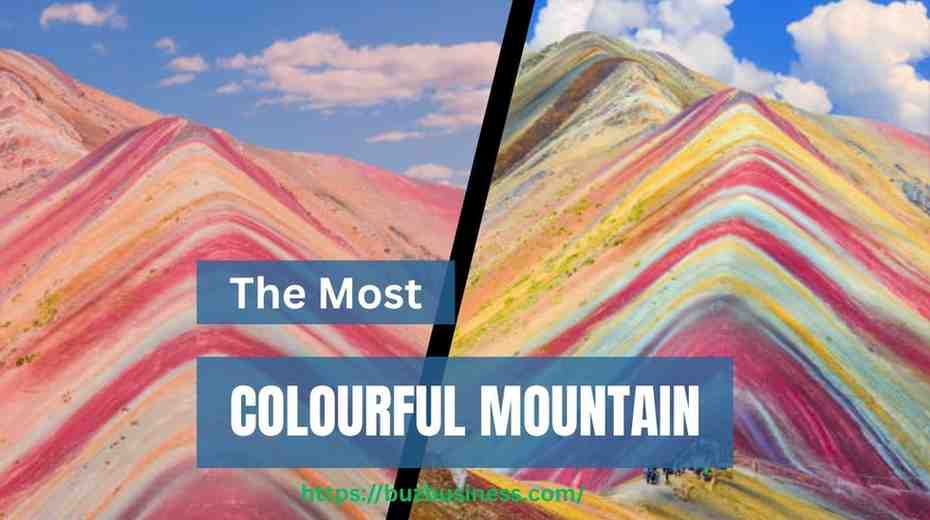
In most cases, we imagine colourful mountains with rugged peaks and forest-covered slopes. But there are many mountains scattered around the world that look like they’ve been painted. These landscapes often feel like works of art rather than natural formations, thanks to their reds and golds and surreal rainbow stripes.
What causes such bursts of colour? It turns out, millions of years of mineral deposits, shifting rock layers, and erosion can create jaw-dropping patterns and hues. And while you’ve probably seen photos of Peru’s Rainbow Mountain on Instagram, there are plenty more that are just as striking (and far less crowded).
In this guide, we’ll explore some of the most colourful mountains across the globe, plus a few stunning spots here in India that deserve way more attention. So, whether you’re planning your next trekking adventure or just looking for some travel inspiration, keep scrolling. You might find a new favourite place.
1. Rainbow Mountain, Peru
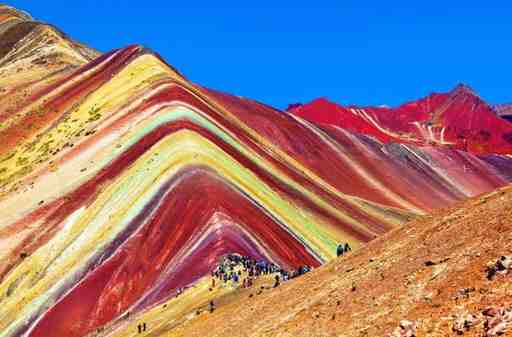
If you’ve ever typed “colourful mountains” into a search bar, there’s a good chance you’ve seen a photo of Vinicunca (more famously known as Rainbow Mountain). Tucked away in the Peruvian Andes near Cusco, this striped giant has become a favourite among travellers and photographers for good reason. Its naturally vibrant reds, yellows, and greens are caused by mineral deposits, iron oxide, copper, and sulfur, stacked in layers over millions of years.
The hike to the summit is no joke, though. At over 5,000 meters above sea level, the air gets thin fast. But for many, the climb is worth it for that moment when the mountain reveals itself in full colour under the morning sun. (Pro tip: the colours show best on a clear day, right after a bit of rain.)
Most people visit as a day trip from Cusco, which is also the starting point for Machu Picchu. Tours often leave early in the morning, and it’s wise to acclimate to the altitude for a few days beforehand.
2. Zhangye Danxia, China
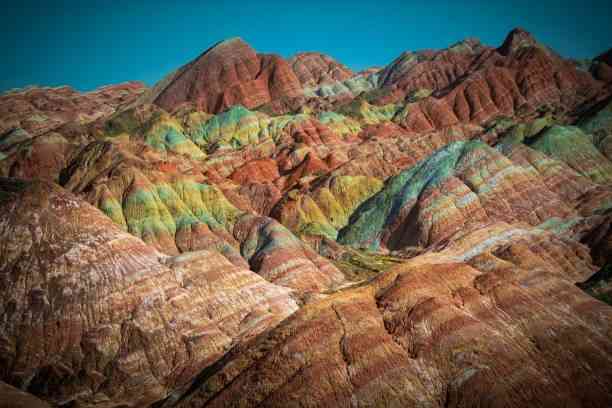
Tucked away in China’s Gansu province is one of the world’s most surreal landscapes: the Zhangye Danxia Landform Geological Park. At first glance, it looks like someone ran wild with a paintbrush across the colourful mountains, thanks to the streaks of red, orange, yellow, and even lavender ripple across the hills like waves. And yet, this isn’t CGI or Photoshop. It’s 100% real, and even more breathtaking in person.
These colourful formations were created over 24 million years, as layers of sandstone and minerals compressed and were pushed up by tectonic activity. Over time, wind and rain sculpted the rolling shapes and carved out ridges and gullies, leaving behind a scene that looks more like a painting than a natural park.
You can explore the area via boardwalks and viewing platforms, many of which offer wide panoramic views, especially stunning at sunset. And since the site has become a protected UNESCO geopark, it’s well-maintained and surprisingly easy to navigate for tourists.
3. Vinicunca vs. Palcoyo: Which Rainbow Mountain Should You Visit?
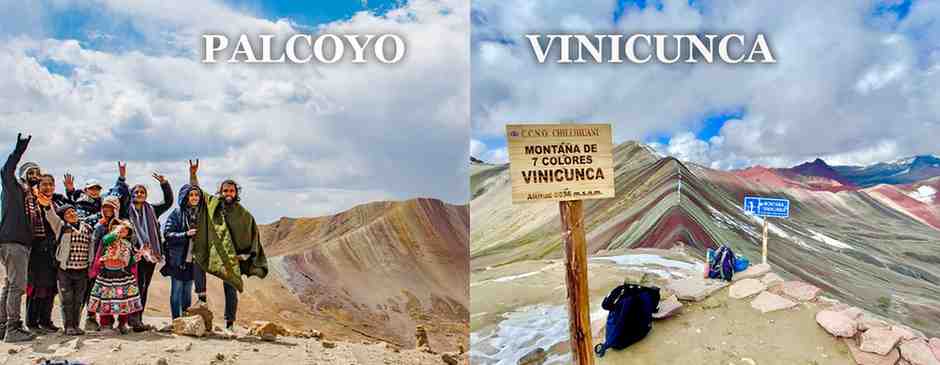
While Vinicunca gets all the fame, it’s not the only rainbow-colored mountain in Peru. Just a short distance away lies Palcoyo, a lesser-known (but equally stunning) alternative. Both are part of the same Andean range and share those iconic colourful stripes, but the experiences are surprisingly different.
Vinicunca is the more dramatic of the two, with bolder colours and a more rugged profile. It’s also much more popular, which means early morning crowds and a tough 3–4 hour hike at high altitude. If you’re up for the challenge and want that epic, postcard-perfect view, Vinicunca is the way to go.
Palcoyo, on the other hand, is perfect for travellers who want the beauty without the burnout. The hike is shorter and gentler, and you’ll often share the trail with only a handful of people. It also has three rainbow mountains and a natural stone forest nearby.
If you’re travelling from India or anywhere far away, it’s worth knowing both options exist, especially if you’re worried about the altitude.
| Feature | Vinicunca | Palcoyo |
| Elevation | ~5,200m | ~4,900 |
| Hike difficulty | Moderate to tough | Easy to moderate |
| Hiking time | 3-4 hours round-trip | 1-1.5 hours round-trip |
| Crowd level | High | Low |
| Photo-worthy views | Dramatic, iconic | Quieter, peaceful |
4. The Painted Hills, USA
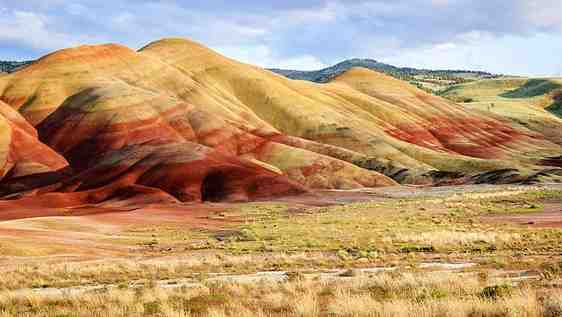
Oregon might not be the first place that comes to mind when you think of colourful mountains, but the Painted Hills will surprise you. Located in the high desert of central Oregon, these rolling mounds are layered in earthy reds, ochres, golds, and blacks, changing subtly depending on the light and season. Some days, the colours glow like fire. Other times, they look soft and dusty, like a faded watercolour.
The hues here are thanks to ancient volcanic ash layers that were compressed and transformed by time. Each colour represents a different geological era: reds from laterite soil rich in iron, yellows from fossilised vegetation, and blacks from manganese deposits. It’s like walking through a time capsule disguised as art.
There are a few short trails you can follow, including the Painted Cove Trail, which has a boardwalk winding directly through some of the most vibrant areas. No climbing needed, just a camera and a sense of wonder.
5. Landmannalaugar, Iceland
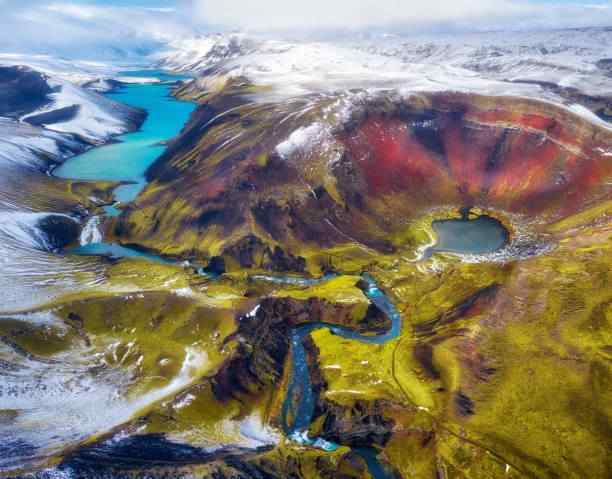
Deep in Iceland’s remote Highlands, far from the typical tourist trail, lies Landmannalaugar: a dreamlike landscape of pastel-colored mountains, lava fields, and steaming hot springs. The mountains here shimmer in shades of pink, yellow, green, and blue, thanks to rhyolite rock formed by volcanic activity over thousands of years.
Unlike other “colourful mountains,” this one doesn’t reveal itself in clean stripes or bands. Instead, the colours bleed together across peaks and valleys like melting ice cream, especially under Iceland’s soft summer light. It’s otherworldly and strangely quiet, like walking through a painting in motion.
Most people arrive here in 4×4 vehicles during Iceland’s short summer window (June–September). There are marked hiking trails for all levels, and if you’re brave enough, you can even take a dip in one of the natural geothermal pools after your trek.
6. Dzukou Valley, Nagaland: India’s Hidden Colourful Mountain
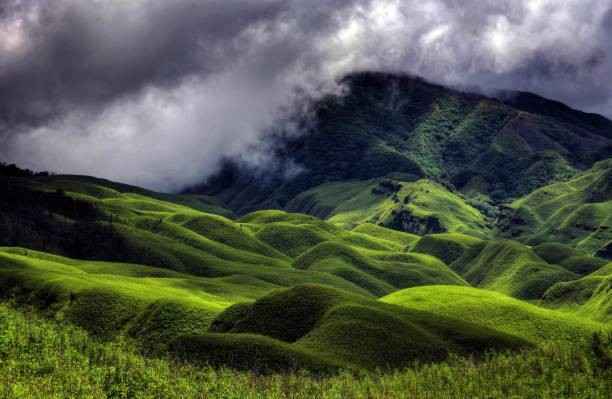
Most travellers haven’t heard of Dzukou Valley, and maybe that’s part of its charm. Nestled between Nagaland and Manipur in India’s northeast, this mountain valley comes alive in summer when a sea of wildflowers spreads across its grassy slopes. At the heart of the bloom is the rare Dzukou Lily, found only here, painting the landscape in soft blush pinks and creamy whites.
Every year between June and August, the lush green valley transforms into a painter’s palette of wildflowers. Mist rolls in and out, giving the landscape an ethereal quality. And because it’s still off most tourist radars, you won’t have to share the view with too many people, just a few other trekkers and the sound of the wind.
Reaching the valley takes a bit of effort, usually a trek from Viswema or Jakhama village near Kohima, but that’s part of what makes it so rewarding. Once you’re up there, the cool air, open skies, and gentle quiet wrap around you. If you’re the kind of traveller who enjoys slow mornings, simple cabins, and wild beauty, Dzukou might be your favourite place you’ve never been.
7. Valley of Flowers, Uttarakhand
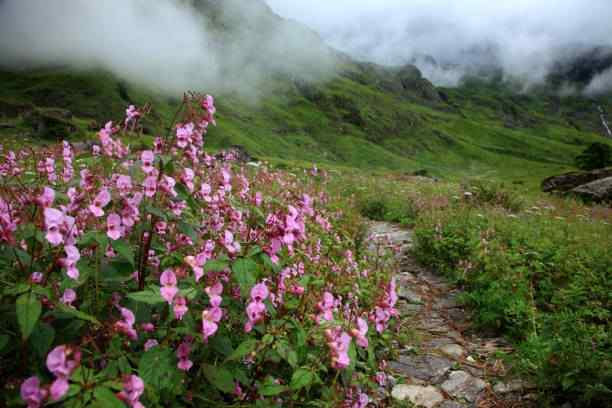
Hidden high in the Western Himalayas, Valley of Flowers National Park is one of India’s most vibrant natural wonders and a UNESCO World Heritage Site. Come mid-July, this mountain valley explodes into bloom with thousands of wildflower species: blue poppies, primulas, orchids, marigolds, and more. The huge range of colours scattered across the green background of snow-capped peaks feels almost imaginary.
Unlike other spots on this list, Valley of Flowers isn’t known for colourful rocks or minerals. It’s nature’s florals that steal the show. What makes the experience magical isn’t just the colours, but the contrast. One moment you’re trekking through misty alpine woods, and the next, you’re in a carpet of blossoms with butterflies fluttering past.
Getting there takes some effort. You’ll start from Govindghat, then hike about 13 km to reach Ghangaria, the base camp for both the valley and Hemkund Sahib. From there, it’s another 3–4 km into the valley itself. The best part? The route is peaceful, and the views keep changing with every turn.
Honourable Mentions (Quick Hits)
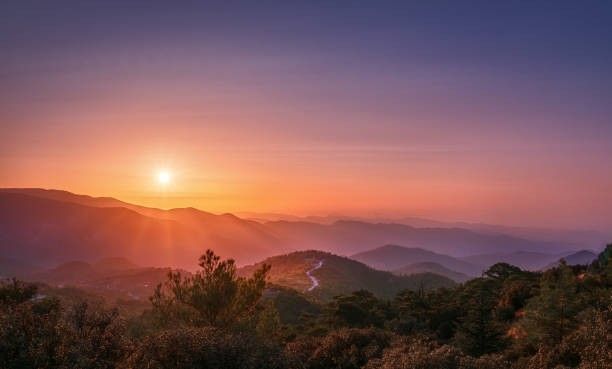
There are a few other places around the world that might not be as famous, but they’re definitely worth a visit if you love colourful landscapes.
Take Fairy Meadows in Pakistan, for example. It’s a quiet, green patch at the foot of Nanga Parbat: one of the world’s tallest peaks. When the wildflowers bloom, the whole area feels like something out of a fairytale. It’s perfect if you want peace and natural beauty without the crowds.
Then there’s Ausangate in Peru, not far from the famous Rainbow Mountain. The colours here run deep. Think rusty reds and cool blues, but the trek is more challenging. If you’re up for an adventure, this less-visited spot might just steal your heart.
And finally, on the island of Mauritius, you’ll find the Chamarel Coloured Earth. It’s not a mountain, exactly, but a patch of earth that naturally shows off seven different colours. Walking through it feels like stepping into a painter’s palette.
None of these places are overrun with tourists yet, which makes them special in their own way.
So, Why Are These Mountains So Colourful?
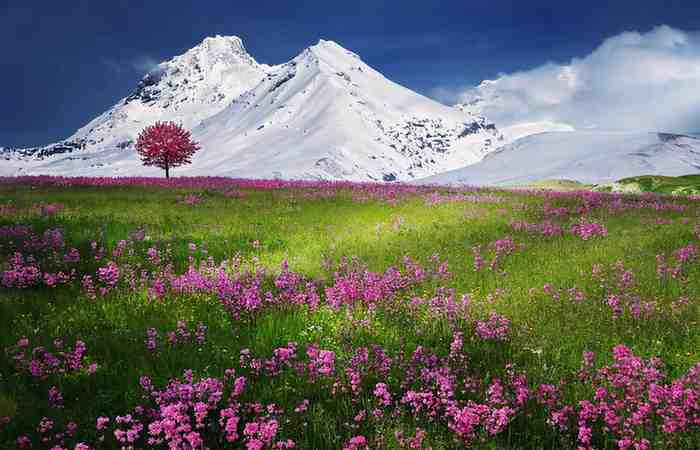
So, what makes these mountains so colourful to begin with? It mostly has to do with how the mountains were made millions of years ago.
Each mineral has its own colour. When those minerals are layered into rocks, it leads to a rainbow of different colours. For instance, Iron is red, copper is blue, and sulfur is yellow. Put these together in different streaks, and you end up with a rainbow mountain. These colours get shown off as erosion removes the surface layers of soil to reveal the rock underneath.
Each mountain has its own story, though. Some are made from a special volcanic rock called rhyolite, which turns all sorts of different colours depending on what it’s mixed with. Many mountains in Peru are made with this, and their huge array of colours is one reason they’re so famous.
Planning a Visit: Tips for Indian Travellers
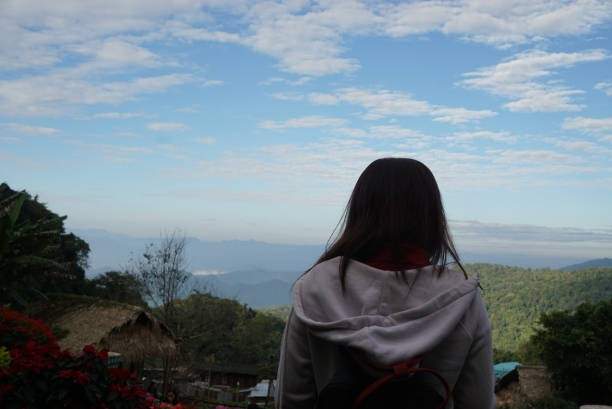
If you’ve been thinking about going to one of these colourful mountains, here are some points you may want to keep in mind (especially if you’re from India).
For one, many of the famous spots like Rainbow Mountain (Peru) or Zhangye Danxia (China) require a lot of planning. You’ll need a visa, which can take some time, so start far before when you plan to travel. Some of these mountains are also very tall, so you may need to take some time to acclimate. Otherwise, you may find yourself experiencing altitude sickness.
Plus, getting to many of these places isn’t cheap, either. There are some budget-friendly options, though. You could try booking well in advance to find better prices, especially if you intend to go during the busy season.
You will have to splurge on some gear, though! Plenty of layers and good hiking shoes are a must. These can be expensive, and you’ll typically need to purchase them before you reach your destination.



